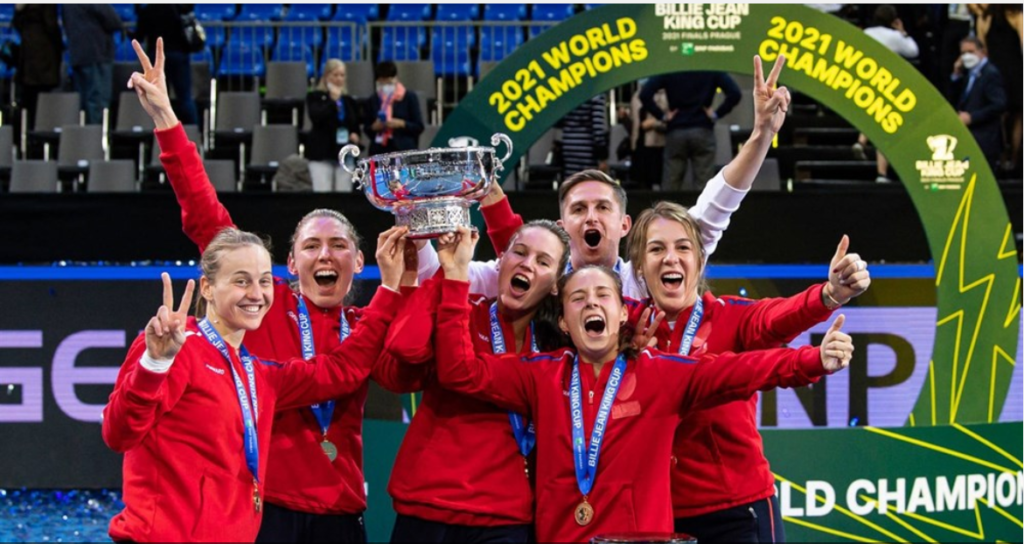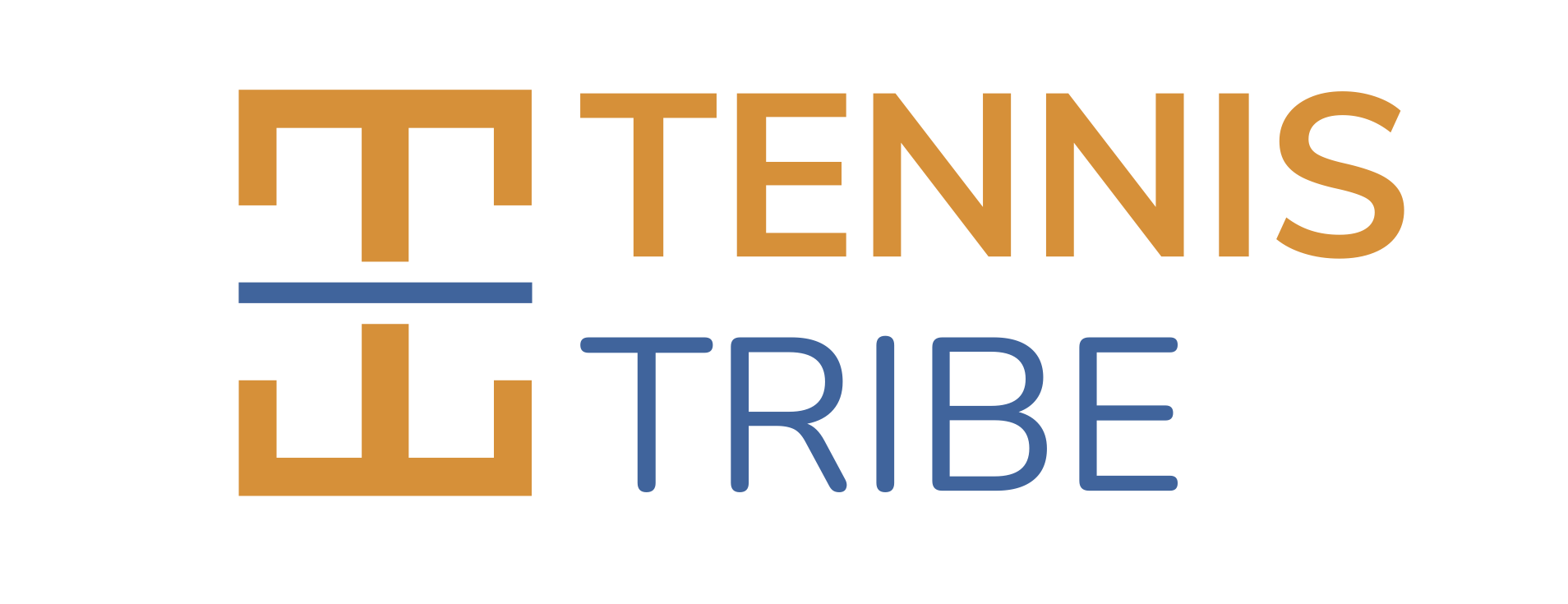Last week, 12 countries assembled in Prague to compete in the inaugural Billie Jean King Cup. Formerly known as Fed Cup, the women’s team competition had long been criticized for its stale format and scheduling demands that often led to infrequent participation from many top players.

With a new name, new format, and new venue, the revamped Billie Jean King Cup made its first imprint on the tennis landscape while proponents and critics watched closely from the sidelines to see if the event would be a success. Now that’s officially in the books, what was the verdict?
Play Doubles?
Get doubles tips and strategies every Thursday – learn to play smarter and win more matches!
Bonus Guide: 3 Doubles Tactics to Force Errors & Get More Easy Volleys
Overall Mixed Consensus
A mixed bag, many tennis fans would likely say. Overall, the crowds were sparse and the energy was lacking. Playing at a neutral site removed the wild atmosphere of home and away ties when all tennis etiquette goes astray and casual fans pack stadiums to root for their home country. It didn’t help that the Czech Republic, the home team that has dominated the competition over the last decade with six titles in 10 years, unexpectedly failed to advance beyond group play.
Additionally, the top players were few and far between due to the WTA finals being held in Mexico the week after the event (as I write this) on a different continent and completely different climate. Only four of the top 20 players – Barbora Krejcikova, Angelique Kerber, Belinda Bencic, and Anastasia Pavlyuchenkova – played the Billie Jean King Cup.
On the positive side, having all 12 teams in one place for the entire tournament made it easy and exciting to follow from start to finish. Plus, the match quality was high with some incredible three-set matches (hello Pavlyuchenkova-Collins and Kerber-Krejcikova), a dramatic, yet controversial finish by Team Russia that rubbed their Swiss opponents the wrong way, a proper career send-off to the beloved Carla Suarez Navarro, and the tournament namesake in attendance herself.
Our favorite part of the tournament? Doubles got the spotlight it deserves.
Thanks to the new best-of-three format featuring two singles matches and one doubles match, doubles has never been more relevant. During group play, six of 12 matches came down to the final doubles point and three of those six matches finished in a dramatic third-set matchbreaker:
- Spain d. Slovakia 4-6, 6-2, 10-7
- Slovakia upset the United States 6-2, 6-7, 12-10
- Czech Republic d. Germany 6-4, 6-7, 10-8
In the previous best-of-five format in Fed Cup, doubles were played last after four singles matches and often ended up being a dead rubber (i.e, the outcome of the match had already been decided before doubles). As a result, doubles turned out to be a much less significant factor for team captains when selecting their player roster and match lineups.
Doubles Specialists Shine
With less room for error in singles under the new format, top doubles specialists like Gaby Dabrowski (Canada), Katerina Siniakova (Czech Republic), and Veronica Kudermetova (Russia) proved to be in high demand as they each helped their respective countries win crucial doubles matches.
- No. 5 Dabrowski, a former Doubles Only podcast guest and friend of the Tennis Tribe, led the underdog Canadian squad to upset France in group play by clinching the doubles point. She even got a shoutout from Matt Roberts with The Tennis Podcast who commended her exceptional doubles performance and court sense.
- No. 2 Siniakova, a multi-grand slam champion and Olympic gold medalist, led the Czechs to a tight win over Germany in group play despite playing without regular partner Barbora Krejcikova.
- No. 11 Kudermetova helped lead the Russians to win the championship, finishing 3-0 in doubles without dropping a set the entire tournament.
Americans’ Achilles Heel
Perhaps the team most impacted by doubles was the United States, who made it to the semi-finals despite going 0-3 in doubles throughout the competition. For a country that features six doubles players currently ranked inside the top 30 – No. 13 Nicole Melichar-Martinez, No. 15 Bethanie Mattek-Sands, No. 16 Caty McNally, No. 17 Coco Gauff, No. 21 Desirae Krawczyk, and No. 27 Caroline Dolehide – only one of these players participated in Fed Cup (Dolehide).
She and partner Coco Vandeweghe, an experienced doubles player herself who is on the brink of a comeback after a long injury hiatus, underperformed and finished 0-2 together. They lost two winnable matches, first in heartbreaking fashion to Slovakia and then again in straight sets to a relatively unknown Spanish team.
In the semi-finals against Russia, U.S. Captain Kathy Rinaldi substituted Shelby Rogers for Dolehide for a change of pace. The Russian squad was simply too good, dismissing Vaneweghe/Rogers 6-3, 6-3 in a comprehensive win.
Would the American’s fate have turned out differently if McCoco, Nicole Melichar-Martinez, or Bethanie Mattek-Sands had been in the mix? Would the Russians have been as strong without Kudermetova’s doubles experience? Could the Czechs have advanced to the semi-finals if Krejcikova was healthy enough to play with Siniakova?
Doubles Ultimatum
For the top teams who were in conversation to take the title, doubles was the ultimate deciding factor. The Russians won because they had a top doubles specialist and a deep roster of singles players who are also accomplished in doubles.
The U.S. came up short because they were missing their top five best doubles players. The Czech Republic didn’t advance past group play because they only played half of their World No.1 doubles team.
With any new event, there will always be early kinks to work through and a mixed bag of reviews. But if the Billie Jean King Cup got one thing right, the best-of-three format brought doubles to the center stage and gave it the platform it deserves.

Leave a Reply